Benefits of Modular Clean Rooms
What is a Clean Room?
Clean rooms are enclosures designed to facilitate very sensitive research, fabrication, and any other operation that must take place in the absence or near absence of dirt, dust, moisture and other atmospheric conditions.
Clean rooms are not intended to be totally sterile environments; the concern of most professionals is reducing the dust molecules to the barest minimum.
What is a Modular Clean Room?
Modular Clean Rooms are one of the most popular types of clean rooms. Clean room manufacturers design them and construct their pre-cut parts at the factory, then ship them to the customer. Then, either the customer assembles the pieces on-site using an installation kit, or assembles them with the help of a technician from the equipment manufacturer.
What are Some Modular Clean Room Applications?
Modular clean rooms have countless applications in industries ranging from semiconductor to agriculture. Some examples of clean room construction applications include: powder coating enclosures, oil mist enclosures, painting enclosures, and plant cultivation rooms.
Why Do Customers Choose Modular Clean Rooms?
Customers choose modular clean rooms because of the many benefits and advantages that they provide, like those we’ve listed below:
- Modular clean rooms can be assembled for use and disassembled after use.
- They are easy to build, adjust, and update for the best Air Pollution Control.
- They allow their users to study highly sensitive materials and technology without comprising them.
- By eliminating concerns associated with impurities like dust and moisture, they allow operators to make accuracy and efficiency the priority.
- Modular clean rooms offer a potential tax advantage for businesses.
- Researchers can create a micro or mini-environment around their product. For example, they can contain leaks by creating an environment of constant positive pressure.
- Modular clean rooms reduce overall costs by reducing design, engineering and construction time. They also use low cost materials.
- Modular clean rooms are very flexible, especially in comparison to other clean rooms.
- All the air handling and filtration equipment modules are built into the modular room ceiling.
History
The pioneer clean room design was created in 1960 by an American physicist named Willis Whitfield, who worked for Sandia National Laboratories. The clean room that had been in use before Whitfield’s invention had some troubles with particles and the airflow was unpredictable. Once the modern clean room was invented, users were now able to strictly control environments and flush out impurities using constant, highly filtered airflows.
Types
We can divide all modular clean rooms into two major groups: soft wall modular clean rooms and hardwall (hard wall) modular clean rooms. Note both types contain only filtered air that they pull from outside and send through a HEPA filter.
Soft Wall Modular Clean Rooms
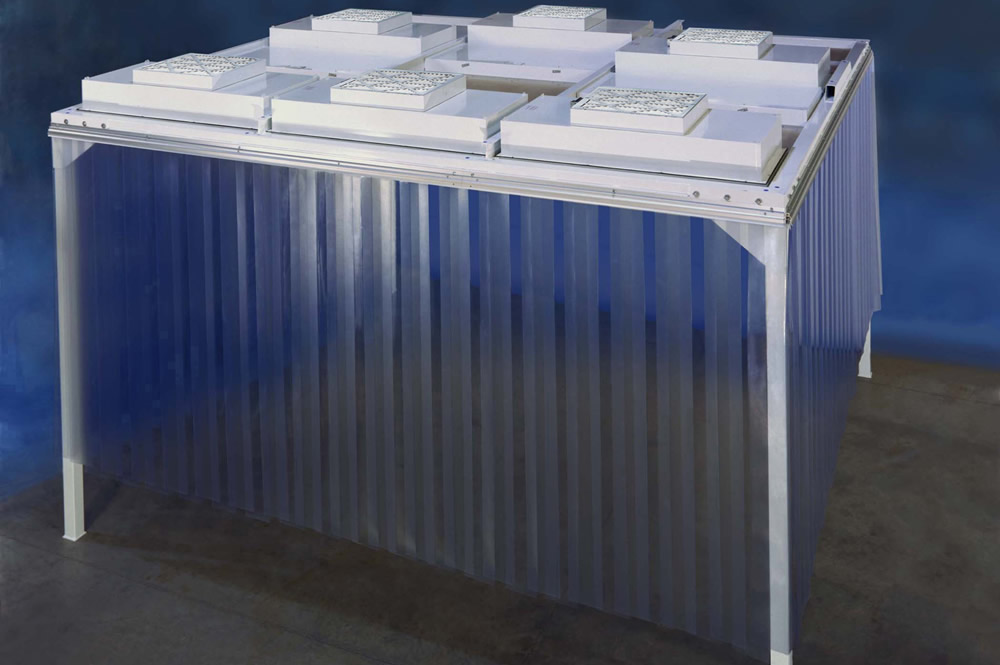
Softwall clean rooms are portable, expandable and easy to relocate as needed. For walls, they use pressurized polymer curtains, like vinyl curtains, instead of hard panels. Usually, the curtains are supported by a tubular steel or aluminum frame with a ceiling grid, but they can also be freestanding. Note these frames do not require the use of bolting hardware.
To ensure workers can enter and exit without causing contamination, the soft walls feature a resealable entrance. To make them more specific to your application, manufacturers can design your softwall modular clean rooms with different additional features, like: castors for easy movement, adjustable ceiling heights, anti-static curtains, non-outgassing curtains, and more.
Hard Wall Modular Clean Rooms
Hardwall modular clean rooms feature walls made from solid panels, which may be made from a variety of materials. Instead of being supported by a frame, hard wall panels support the frame (including the ceiling grid and roof).
Examples of materials from which manufacturers often make hard wall clean rooms include: high pressure laminate, reinforced plastic, polyurethane, expanded polystyrene, pre-painted steel, structural aluminum, aluminum honeycomb, pre-painted aluminum, plastic honeycomb, paper honeycomb and vinyl covered gypsum board.
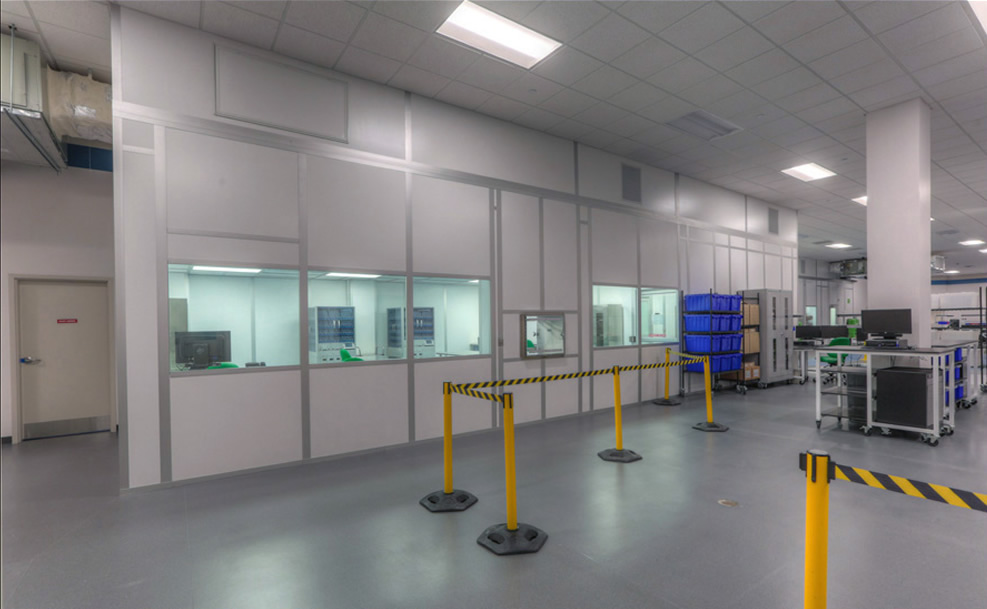
Each material offers something different. Aluminum, for example, works well with electronic applications because it does not combust, shed particles, release gas or create static. Different types of plastics, on the other hand, work well with pharmaceuticals because they are easy to clean and durable.
We can also group modular clean rooms according to the max number of particles sized (.5 microns or larger) that they contain per cubic foot. Note that half a micron is miniscule; the average strand of human hair measures in width between 75 and 100 microns.
Examples of clean rooms classified by max particle number include: class 100 clean rooms, class 1,000 clean rooms and class 10,000 clean rooms.
Class 100 Clean Rooms
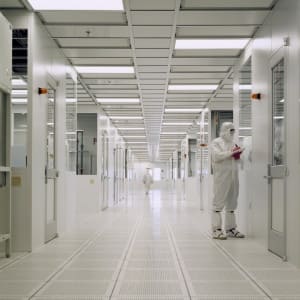
Class 100 clean rooms permit up to 100 particles per cubic foot. Class 100 clean rooms correspond with ISO 5 standard clean rooms.
Because they permit so few particles in their space, class 100 clean rooms are perfect for applications in electronics, semiconductor fabrication, food packaging and nano fabrication.
Usually, before entering this type of clean room, technicians must put on special shoes, where a body suit that covers them from head to toe, and take an air shower (at the entrance).
Class 1,000 Clean Rooms
Class 1,000 clean rooms allow up to 1,000 particles per cubic foot inside at a time. Their ISO equivalent is ISO 6. Class 1,000 clean rooms are not as strict as class 100 clean rooms, but they are still very effective at restricting particles from sources like: dust, lint, human hair, human skin, paint, lubricants and air conditioning machines.
Class 1,000 modular clean rooms are popular for use in a wide range of industries, such as: electronics, lab research, industrial manufacturing, semiconductor, medicine and food processing. Operators use them for applications such as: laser micro-machining, non-contact integration tools, flip-chip integration, product inspection and film deposition.
Class 1,000 clean rooms require a fairly high level of technician cleanliness. Usually, before entering, they have to don a full protective suit that covers all of their hair and skin.
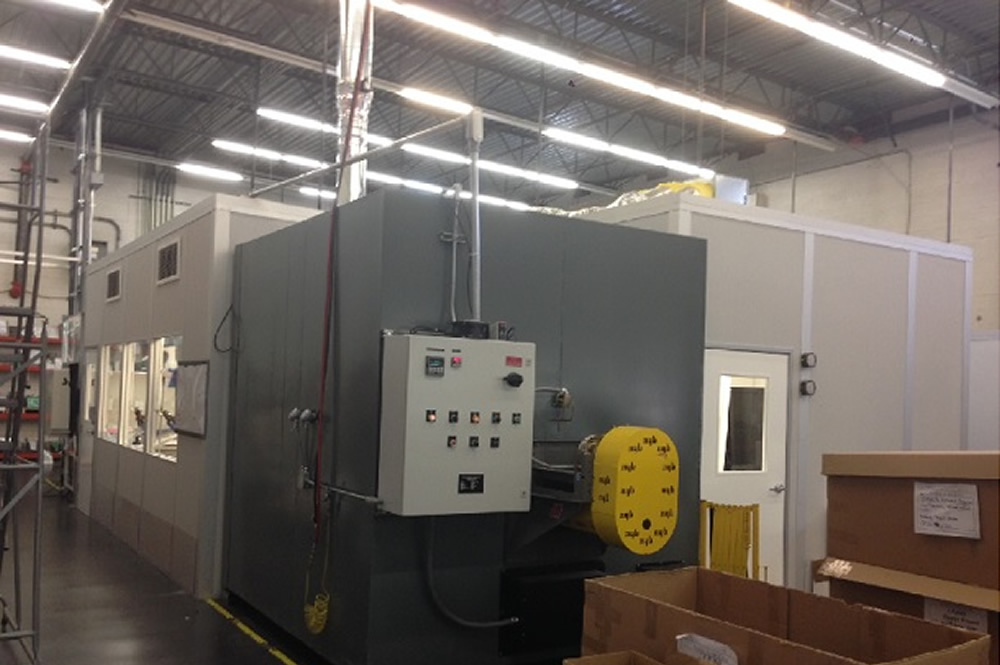
Class 10,000 Clean Rooms
Class 10,000 clean rooms permit the entrance of 10,000 particles per cubic foot. They are the same as ISO 7 clean rooms. Because they allow so much contamination, they recycle out old air and pump in new filtered air between 40 and 60 times an hour.
Though they are much less clean than other clean rooms, class 10,000 clean rooms work well for the fabrication and construction of a number of sensitive products, such as electrical parts and electronics. Also, as long as they meet FDA requirements, operators can use them during lab research, scientific experimentation and pharmaceutical chemical and drug processing.
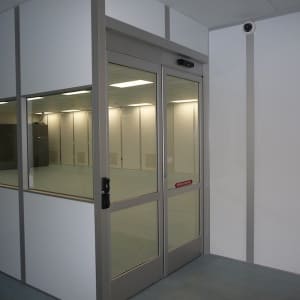
To support these applications, manufacturers typically make the walls/panels of these clean rooms from materials like stainless steel, polycarbonate, aluminum or white acrylic.
When working in Class 10,000 clean rooms, technicians must wear protective gear like lab coats, safety glasses, shoe covers, hair necks and gloves. These will keep particles from their bodies from contaminating anything. They do not, however, have to wear full body suits.
Modular clean rooms are very important for the manufacturing of products that cannot be made in an environment with particles. If you purchase a modular clean room, make sure to take care of it and clean it regularly with an appropriate cleaning solution.
If you are searching for modular clean room suppliers, you can find various clean room suppliers the IQS Directory modular clean room page. We look forward to your visit.

 Castings & Forgings
Castings & Forgings
 Bulk Material Handling
Bulk Material Handling
 Electrical & Electronic Components
Electrical & Electronic Components
 Flow Instrumentation
Flow Instrumentation
 Hardware
Hardware
 Material Handling Equipment
Material Handling Equipment
 Metal Cutting Services
Metal Cutting Services
 Metal Forming Services
Metal Forming Services
 Metal Suppliers
Metal Suppliers
 Motion Control Products
Motion Control Products
 Plant & Facility Equipment
Plant & Facility Equipment
 Plant & Facility Supplies
Plant & Facility Supplies
 Plastic Molding Processes
Plastic Molding Processes
 Pumps & Valves
Pumps & Valves
 Recycling Equipment
Recycling Equipment
 Rubber Products & Services
Rubber Products & Services